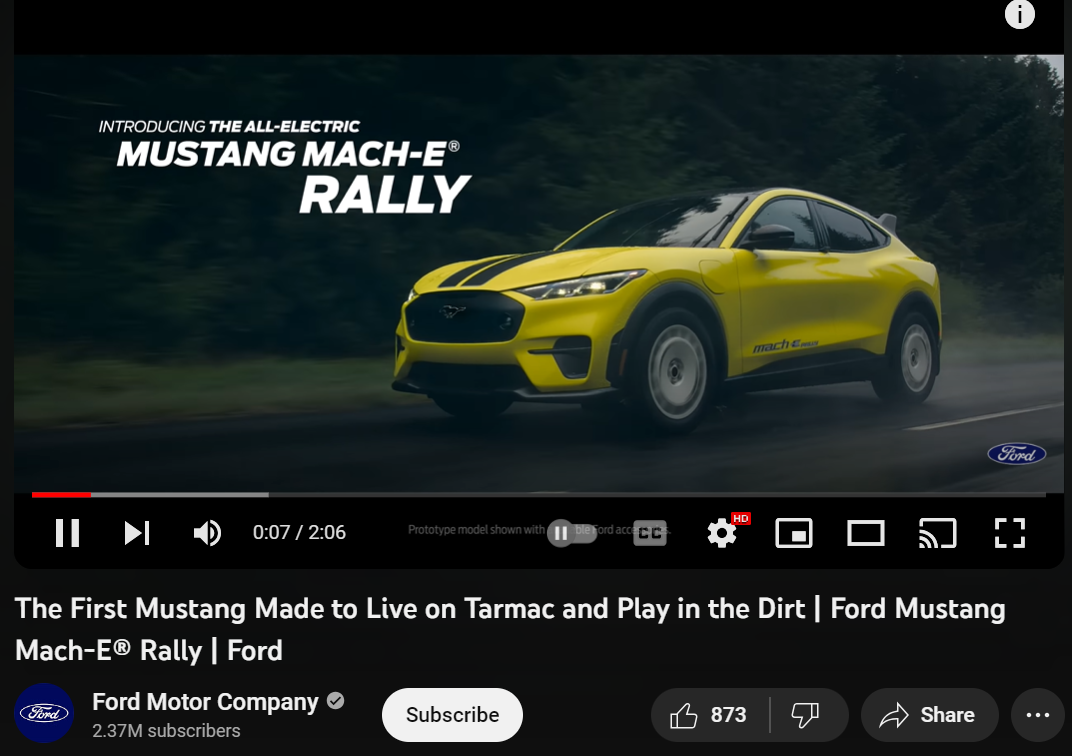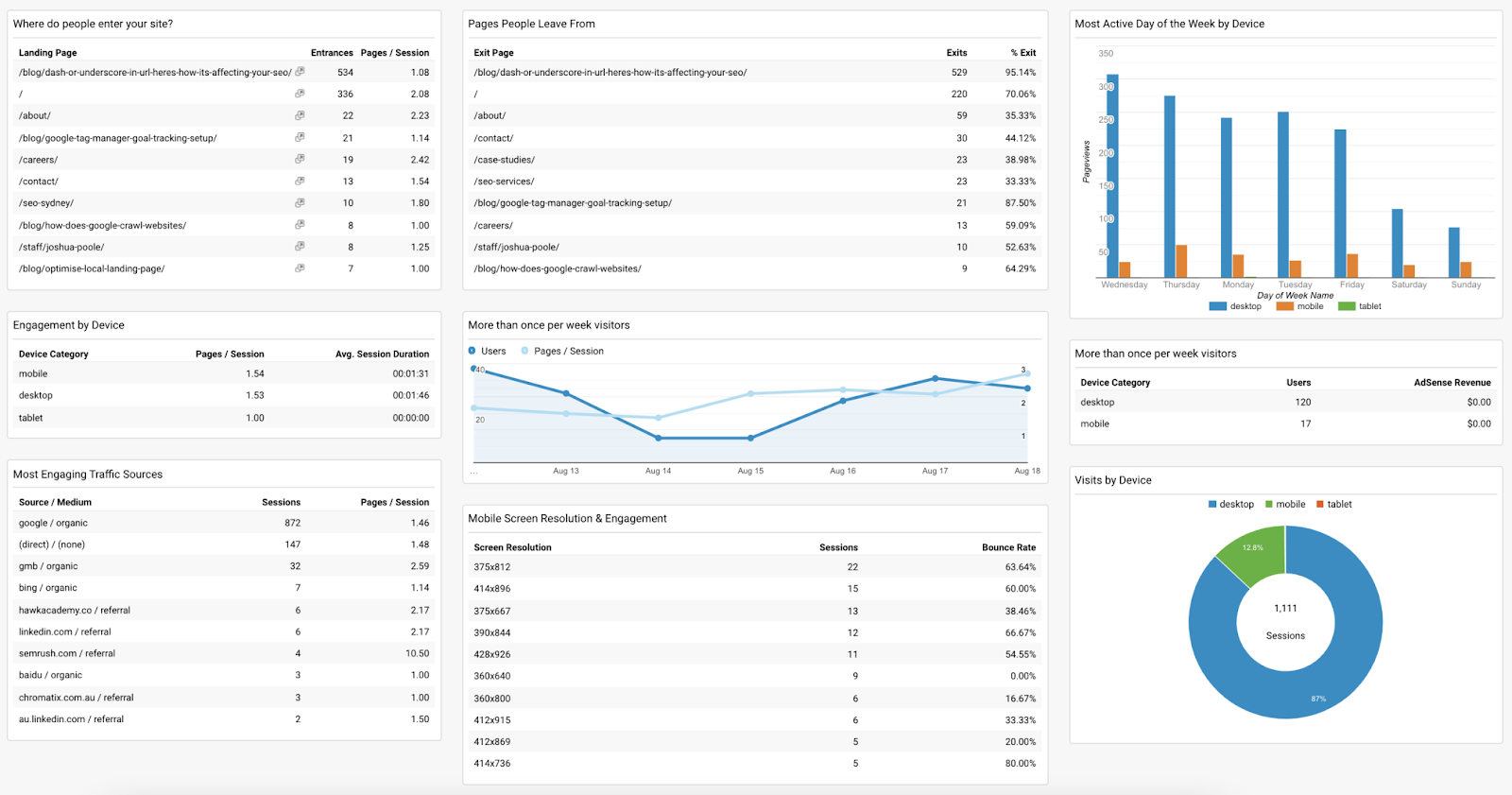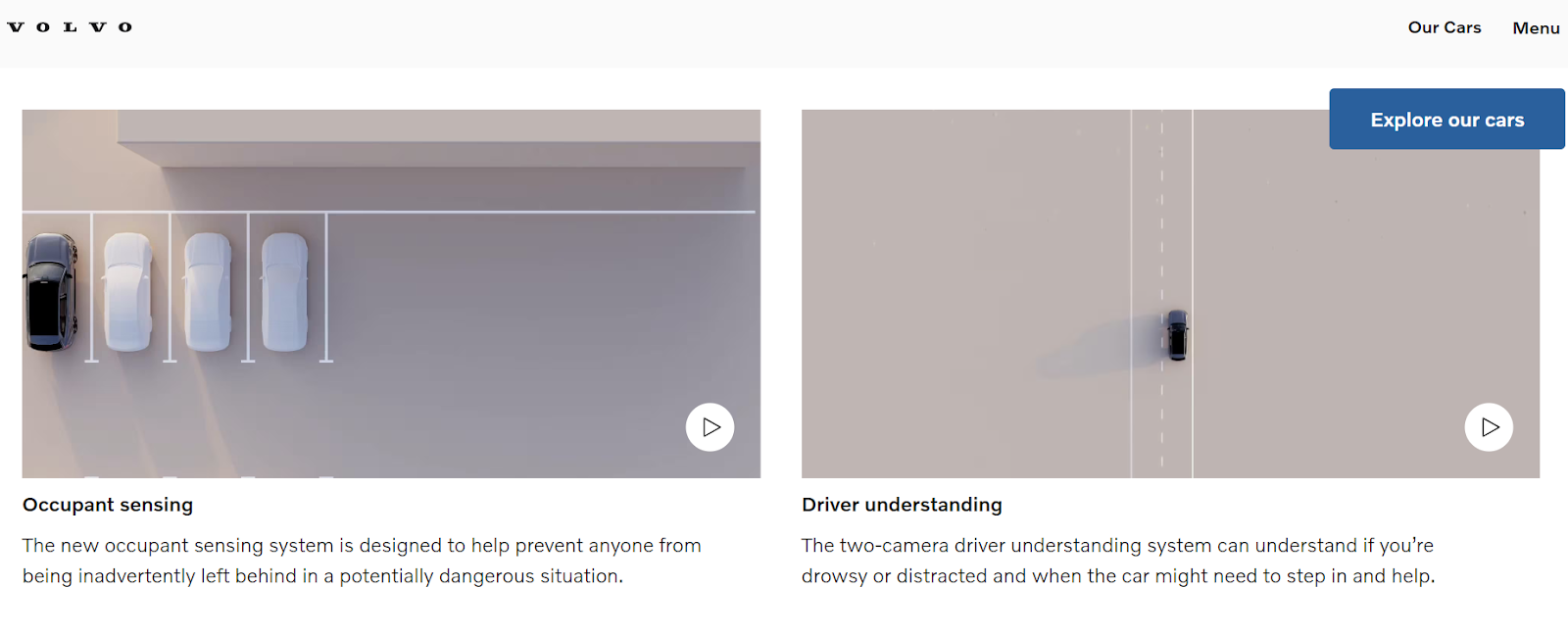Driving Growth: Strategies to Increase Automotive Conversion Rates

Today’s automotive buyer is more digitally savvy than they’ve ever been. Just look at the numbers:
- As much as 59% of buyers conduct online research before entering a car dealership.
- Buyers also research multiple websites, including OEM, car dealership, third-party and used vehicle websites.
- Social media influences 21% of car customers by directly informing their purchase.
To sum it up, buyers are spending a large chunk of their time online, researching yours as well as your competitor’s offerings.
So, how do you get these potential customers online to convert to paying ones offline?
It starts with understanding automotive conversion rates, the factors influencing them, and optimisation strategies to convert more leads.
Let’s dive in.
Understanding conversion rates in the automotive industry

Conversion rate signifies the percentage of intended user actions on your digital asset. These assets include your website, social media accounts, display ads, and more.
It’s used as a performance metric for digital marketing campaigns.
Naturally, the higher your conversion rate, the more successful your campaign is. However, conversion rates will differ for each platform and campaign you run.
The average conversion rate for automotive businesses is 2%. But high performers may see a conversion rate as high as 16%, too.
Good conversion rates depend on your campaign goals, traffic channels, audience demographics and buyer interests, among other factors.
Conversion rate optimisation (CRO) can help improve your automotive conversion rates.
CRO is a set of processes or strategies used to increase the conversion rate while still generating high-quality leads.
Why you should improve your automotive conversion rates
CRO is crucial for your automotive business because:
- It helps you grow your auto sales, revenue and customer base.
- CRO understands the performance of your digital assets to gauge their success.
- It then plans how to use the best-performing assets and channels to improve conversion.
- You can prepare strategies for increasing sales from the same amount of traffic.
- CRO does this by understanding user actions. For example, a user clicks on a ‘Schedule Test Drive’ CTA link but does not complete the form on the landing page.
- It identifies areas of friction during the customer journey and aims to remove or reduce them.
- You can also identify other improvement areas in marketing and lead generation to refine your efforts.
- Overall, CRO improves the marketing ROI and positively impacts your bottom line.
How automotive conversion rates are calculated
Calculate your conversion rate by dividing the total number of conversions on a specific content piece by the total number of people who interact with that content.
Conversion Rate = (Total number of conversions / Total number of clicks) * 100
Consider this. 2,000 users visit your contact form page. Out of these users, 100 click on the form and fill it out. Therefore, your conversion rate for the contact form page is (100/2000) * 100 = 5%.
Other than the contact page form-fill, any desired action that the user undertakes can be defined as a conversion.
For example, you put up a social media post asking users to click on the CTA button to download an eBook. When users click on the button, it’s counted as a conversion.
Other actions include:
- Phone calls
- Website chats
- Form fills on landing pages
- Test drive scheduling
- Consultation scheduling
- Downloading a resource
You can calculate conversion rates separately for each action or campaign.
Factors influencing auto sales and conversion rates
Calculating conversion rates may seem pretty straightforward, but there are multiple factors influencing it.
We discuss the four most influential factors below:
1. Website design and user experience
Your website’s design and functionality are some of the biggest influencing factors for conversion.
If it’s well-designed, attractive and user-friendly, you’re likely to capture more user attention. Subsequently, it increases conversion.
On the flip side, a poorly optimised website increases your bounce rate. More users leave the website without taking any action.
To make your website more engaging, improve the quality of content. It must be valuable and build your credibility in the automotive industry.
Include important information like vehicle list, pricing, car dealerships’ addresses, contact details, resources and guides. Make them easy to find and navigate.
Similarly, your primary CTA must be clearly visible, with the next steps concisely outlined.
2. Mobile optimization
Mobile usage is on the rise:
- There are 6.8 billion smartphone users worldwide.
- Internet traffic from mobile occupies a 58.5% share of total global online traffic.
More buyers are using mobile today to research and inform their purchase. Nearly 70% of internet users prefer to check online reviews on their smartphones rather than talk to an in-store employee.
So, it’s not just about ensuring that your website is well-designed for desktop visitors alone. You need to ensure it is optimised for mobile so that it loads quickly and is easy to navigate, keeping mobile users engaged.
3. Digital marketing
Digital marketing is extremely competitive as multiple automotive brands jostle for space.
Amidst this intense competition, incorrect CTAs, improper targeting, and poor-quality content critically impact your conversion rates.
Instead, maintaining focus on customer value pays off. Your campaigns must provide information rather than being explicitly promotional. This makes it easier for buyers to compare your offerings with others.
Buyers are also more confident when making a purchase for vehicles, related products and parts online.
Digital marketing connects the online journey to offline purchase. If you don’t know how your lead moves through digital platforms, you can’t convert them into paying customers.
For example, leads may fill up the ‘Schedule Test Drive’ form on your website. However, if you don’t close the online loop by calling these potential customers and confirming the appointment, they simply may not show up.
4. Artificial intelligence (AI)
AI is an exceptionally powerful technology. It equips you with the capabilities to study and predict customer behaviour. You can use it to offer personalised recommendations.
As a business leader, you can make confident and data-driven decisions.
At the service level, your team can quickly respond to and resolve customer queries through chatbots or virtual assistants.
Subsequently, AI improves conversion rates by a significant margin.
Now that you’re well aware of the importance of conversion rates, you may want to learn more about optimising it.
Strategies to optimise automotive conversion rates

There are multiple ways you can optimise and improve your conversion rates. Here are our top picks:
1. Optimise lead generation
To optimise lead generation, start with identifying friction areas that lead to drop-off. Generally, the below three areas need improvement.
Lead generation forms
If you’re not getting many form fills through the website, chances are it may not have a clearly visible CTA. Or it isn’t placed on the right page.

Source: Audi UK
Instead, you can use dynamic forms. These forms appear on pages based on the user’s activity, so they don’t need to navigate through multiple tabs to fill in their details.
Driftrock’s Forms Launcher uses dynamic and interactive forms to engage potential customers. These forms are user-friendly, easily accessible and have a minimizable interface. You can also add multiple steps to your forms and improve conversion.
Plus, you can experiment with various templates–banners, inline forms or standalone landing pages.
Lead generation forms are versatile in that you can use them in multiple other ways. Attach them to your organic and paid ad posts across platforms.
To set up a lead generation form, use no-code platforms. You can quickly create a form and choose where you want it to be triggered. They also integrate form-fill data with your CRM.
Web traffic quality
Improve your web traffic quality through social media, SEO and PPC ads.
On social media, use multiple formats to make your content engaging–videos, images, stories, short and long-form videos, and carousels. It also helps avoid fatigue and, thus, improves conversion.

Source: Kia UK
PPC ads can target specific demographics and interests. Instead of a general audience, you reach buyers who have higher purchase intent. To optimise PPC ads, experiment with keywords and ad groups.
When it comes to SEO, think about website content as well as local SEO.
Optimise content for traffic with higher intent by publishing relevant resources. This improves your ranking and visibility on SERPs.
You can optimise local SEO by having car dealerships set up Google My Business profiles. The more information they add to their profile, the easier it is for web leads to become familiar with them. The more familiar potential customers are, the more likely they are to reach out.
Lead management system
Bring together your lead generation form and web traffic activities by using a lead management system to monitor conversions.

Source: Driftrock
You can automate lead data capture and track each customer throughout their journey (from source to conversion and post-purchase).
Plus, you have quick access to real-time insights and customer behaviour.
Lead management systems such as Driftrock can be connected to the CRM. So, you can run remarketing campaigns to improve top-of-the-mind recall and convert interested prospects.
2. Deploy video marketing
Video has been the most popular and influential media format for four years in a row. And it has the highest ROI among all media formats.
91% of people want to see more videos from brands in 2023. 87% of marketers agree, saying that video directly improves the bottom line.

Source: Ford Motor Company, USA
Video marketing has multiple benefits for conversion:
- Increased web traffic
- Better SEO ranking
- Higher engagement
Despite video’s effectiveness, as much as 43% of businesses don’t have a video strategy in place.
Now is the right time to capitalise on video.
After you set a conversion goal, choose from multiple video ideas for your automotive business. These include:
- Vehicle demos and walkarounds
- Feature highlights
- Automotive launch events
- Explainer videos on vehicle’s features, maintenance and servicing
- Customer testimonials
- Organisational culture highlights
- Collaborations and sponsorships with influencers, celebrities and other automotive brands
Then, select the most relevant platform to publish your video. For instance, product launches and reviews work best on YouTube as long-form videos. In comparison, short-form and candid videos are geared towards Instagram and TikTok audiences.
You could add videos to your emails and landing pages to make them more interesting.
Remember to add CTAs to your videos linking to specific landing pages, lead forms, product pages, test drive or visit to the dealership.
3. Use data analytics
With data analytics, you can monitor, measure and test conversion tactics.
Monitor and measure
Data analytics helps you understand your web traffic, user interests, user behaviour and shopper experience. You can leverage the insights to determine what influences buyers to make a purchase and what you can do better.

Source: Semrush
Plus, you can analyse your performance as well as each dealership’s performance and compare it with competitors.
Data analytics can measure ROI effectively from multiple sources. You can then prioritise ad budgets, spends and platforms for sources that perform well.
Multiple tools offer data analytics:
- Google Analytics
- Adobe Analytics
- Heat mapping tools
- Social media analytics
- Website CMS
- Lead management system like Driftrock
Test
Use forecast models to understand what happens if you make changes to campaigns.
A/B testing helps you experiment with these changes. You can select target areas or conversion actions for improvement.

Source: HubSpot
When testing, focus on one variable at a time. These variables may be:
- Copy
- Design
- Image or video assets
- CTA copy
- CTA design
Compare the previous and current versions to determine which one works better. This way, you can use the variables that drive most conversions and implement changes strategically.
4. Refine customer experience
Refine your customer experience across their buying journey by optimising your website, landing pages and personalisation.
You can optimise their overall experience to increase the conversion rate. And connect online activities to offline service. This connection matters because if buyers have a great experience online but are disappointed with the offline service, your conversion is adversely impacted.
Website
Optimise your website so that it:
- Loads quickly
- Is user friendly
- Has intuitive navigation, and
- Is optimised for mobile
Design content pages in a way that they’re easy to understand and follow a hierarchical structure–heading, subheading and small paragraphs or bullet points.

Source: Volvo, USA
Design easy-to-spot CTA buttons and place them where they’re quickly accessible.
Create custom landing pages for each campaign.
Landing pages
These landing pages must engage users with visually appealing and high-quality videos or images.
Communicate your value proposition for users clearly. It should highlight how your offerings have distinct value. You can also outline each vehicle’s unique features.

Source: Hyundai, UK
CTAs on landing pages must guide users to the desired conversion action you want them to undertake. You can do this through persuasive copy that drives urgency and incentivises their action.
Personalisation
Use data analytics to understand buyer patterns, preferences and purchase history. Since customer personas are constantly evolving, refine your ICP regularly.
Group your audience into segments (four to five segments are optimal) to track these changes better.
Tracking customer personas helps spot specific pain points as well as opportunities. You can use this insight to reduce friction and identify moments of truth.
Nurture your potential customers with a personalised experience across the website, emails, SEO, PPC ads, retargeting campaigns, content recommendations and event-based marketing.
Cover the entire customer journey, which includes awareness, consideration, decision and post-purchase.
By covering their journey, you meet buyers where they are most active to build meaningful touchpoints and increase conversion.
5. Leverage social proof
Social proof influences buyer decisions based on the actions and opinions of other customers. It builds more credibility and trust for your brand in an extremely competitive automotive industry.
31% of customers check social media reviews before going through with a purchase.

Source: West Motors, UK
Trust and credibility further increase conversions and auto sales.
Here are some types of social proof you can explore:
- Written testimonials from happy and satisfied customers. These are the most influential and trusted.
- Success stories offer a more detailed, visual version of testimonials. They show how your product has benefitted existing customers.
- Reviews of your vehicles from automotive experts such as carwow, The Car Expert, What Car? and Electrifying.com add extra weight to your reputation.
- Ratings on Google My Business and Yahoo! give your dealerships credibility and induce visits.
- Auto industry awards from leading authorities like World Car, Top Gear, Das Goldene Lenkrad, PACE, and more level up your brand image.
- Influencer and celebrity endorsements or associations help you maximise your clout.
- Social media mentions from customers, OEMs, and dealerships highlight your popularity.
As you collect more social proof, remember to amplify it through multiple mediums–website, landing pages, emails, videos, image posts, stories and dealership marketing.
Real-world success stories of automotive conversion rates
Get inspired by these real-world examples of brands that succeeded in improving their conversion rates.
1. The Car Expert

The Car Expert used Driftrock’s lead capture forms to convert more traffic into potential customers. Users clicked on the banner lead form and could fill in their details without leaving the page. The forms were also optimised for mobile devices.
This ensured that customers started their buying process with the brand on a seamless and frictionless note. Reduced friction increased signups by as much as 400%.
2. Toyota

Source: Top Gear
Toyota turned to eye-tracking algorithms to drive conversions for its hybrid electric car models.
When online users did not see a majority of its viewable display ads, the brand used data on placement IDs that historically received high attention.
The result was a 77% rise in click-to-conversion rate and a 23% increase in conversion.
Drive conversions in the auto industry with holistic lead management
From an overarching business perspective, improving your conversion rates directly improves your bottom line.
Start by understanding the automotive conversion rate and key factors affecting it in an ever-changing business climate. Once you have these insights in place, you can determine the right areas for refining automotive conversion rate.
But testing multiple campaigns is a herculean task. Instead, prioritise your CRO projects.
An easier way to do this is by following the Potential-Importance-Ease (PIE) framework:
- Potential
Indicates the amount of potential improvement offered by the specific CRO project. At this stage, prioritise the worst performers.
- Importance
Denotes the value or importance of the traffic acquired from the improvement. Here, prioritise pages with the highest volume and costliest traffic.
- Ease
Assess the difficulty level of implementing the CRO task. It’s best to prioritise the most optimal use of resources.
Driftrock’s Automotive Marketing platform backs you up with the data needed to track conversions, optimise automotive digital ad spend and boost conversion rates.
Our platform drives lead generation and management for 22 automotive brands and 500+ dealerships, including notable brands like BMW, Honda and Land Rover.
To learn more, book a demo with our product team.



